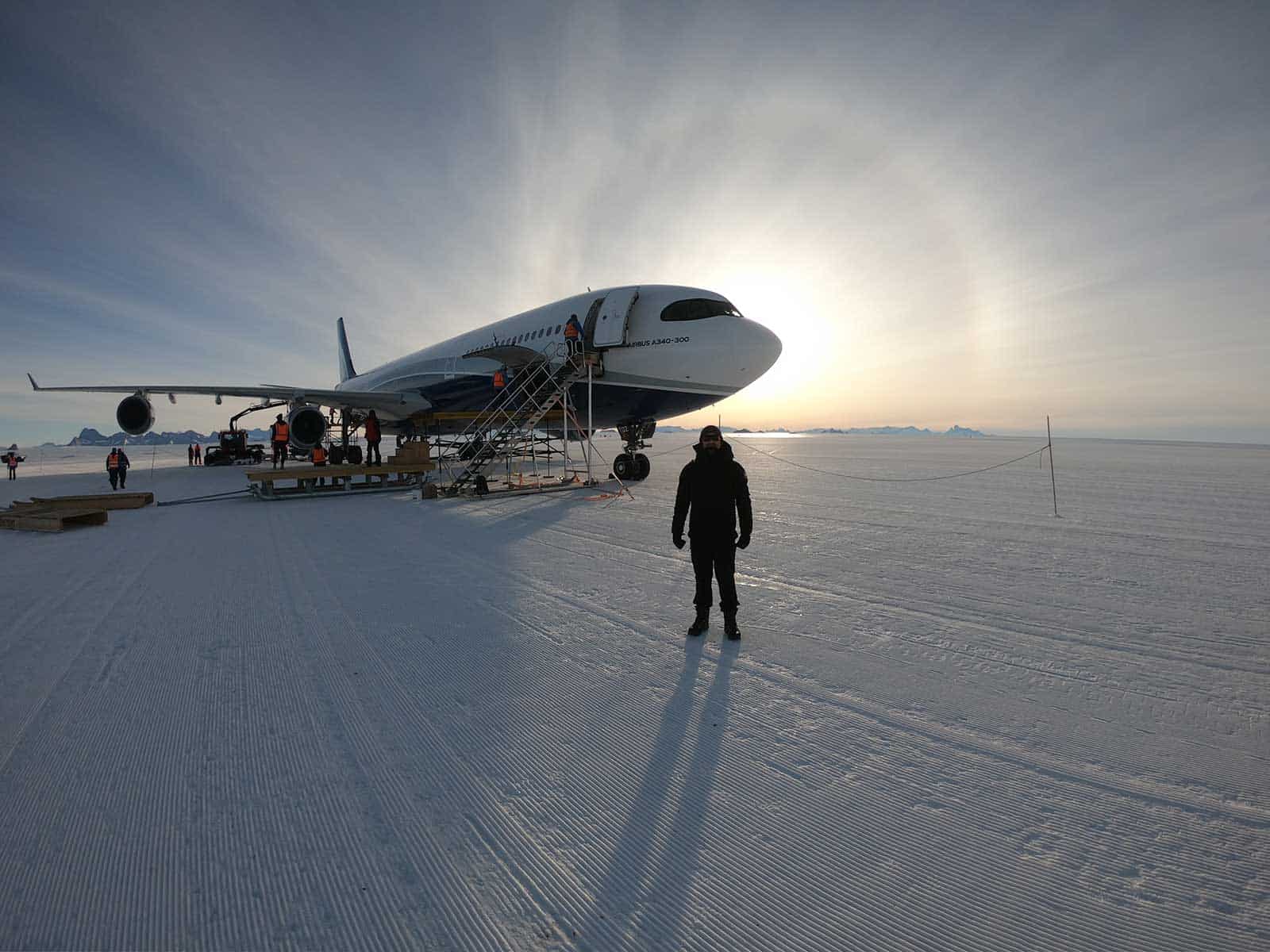March 2023
Overview
Osprey is helping to ensure safer air travel for high end and responsible tourism into Antarctica. Providing critical Instrument Flight Procedures (IFP), Osprey is enabling planes to take off and land safely on the Wolf’s Fang Runway, even in challenging weather conditions and without traditional navAids or air traffic control. Wolf’s Fang is the only exclusively private jet runway in Antarctica, and is sited on glacial blue ice and measures 3,000m x 60m.
Background
Osprey was contacted by White Desert, the owners and operators of Wolf’s Fang, to design Approach and Departure IFPs. This is a published procedure used by aircraft flying in accordance with the instrument flight rules, and designed to achieve and maintain an acceptable level of safety in operations. It includes an instrument approach procedure, a standard instrument departure, a planned departure route and a standard instrument arrival.
Osprey is experienced in supporting air travel for the extreme conditions within Antarctic. Its aviation expertise has already delivered Instrument Approach and Departure Procedures for runways on the Continent, as well as being the incumbent Aircraft Technical Advisors for the British Antarctic Survey (BAS)
Project Challenges
- As a blue ice runway, Wolf’s Fang presents challenges including its length as a runway and the calculation of friction required to ensure aircraft can stop safely. The runway also shifts due to ice drift and another operational challenge is measuring the manual reinstatement of the runway each year
- The ice movements means that no NavAids, such as VOR, DME, NDB or even ILS, could be installed on the ground unlike conventional ‘asphalt’ runways. As an approach and a departure to/from an ice runway, Osprey’s procedures for Wolf’s Fang had to be based on the GNSS (GPS) Signal
- Visibility for pilots is an issue. Given the ice structure around the runway, no large fixed lighting systems, such as PAPI lights (usually installed on the ground) were available
- The freezing conditions of Antarctica can impact the barometric altimeters onboard aircraft, the primary altitude indicator during approach and landing. The errors are induced by temperature and differences to the International Standard Atmosphere (ISA). Luckily, this can be calculated, as a function of the external temperature and the aerodrome elevation, and later be applied as a correction to the altimeter reading in the cockpit. This means that aircraft stay in the recommended descent profile to the runway.
- There is no air traffic controller to talk to the crew as they land and take off given its remoteness and low traffic. Osprey had to ensure the entirety of procedures could be carried out independently by the crew in the cockpit
- There was a tight deadline for design. White Desert wanted to flight assess the procedures during their ‘summer’ time when flights to and from the runway were more frequent
- Wolf’s Fang is aligned into the slope of the local terrain and consequently, the prevailing wind of – 175° True. It also has an overall longitudinal slope of 0.3% rising to the South. This stunning but challenging terrain presents a hazard to aircraft landing and taking off. Osprey had to customise the Missed Approach portion of the approach procedure and implement an early first turn with a high climb gradient upon aircraft departure. This allowed aircraft to safely avoid mountainous terrain to the east and south of the runway whilst still achieving low procedure minima.
Project Outcome
- Osprey facilitated an IFP flight assessment in person in one of the most challenging operating environments on Earth
- The successful operation of two independent aircraft operators on very different aircraft types; the Portuguese carrier Hi-Fly, on the Airbus A340-300 (typically 295 pax. In a three-class cabin & MTOW 277 Tones), and the Austrian carrier AVCONJET on the Gulfstream G550 (14-19 pax. & MTOW 41 Tones) flying the procedures without issues (when applying temperature corrections).
- Further improvement of the the IFPs, making them more efficient and in line with the operational needs of every aircraft operator, following valuable feedback from both crews
Daniel: “Getting the chance to represent the Osprey IFP Design Team on a flight to Wolfs Fang Runway in Antarctica has been a once-in-a-lifetime experience that I will never forget. It certainly was a unique opportunity to better understand, first-hand, the peculiarities of operating a flight in such non-standard conditions and allowed us to gather some incredibly valuable feedback from the A340 crew. Such outcome will help us make our IFPs more suitable to the operating needs of Antarctica, so that they are fit-for-purpose for every operator that wishes to fly to Wolf’s Fang on behalf of White Desert.”
Sophie: “Often, as procedure designers, we have a whole host of factors we need to consider when designing procedures but those presented by the extreme environment at Wolf’s Fang Runway were a whole new level. These are the kind of projects you dream of in this job and I’m incredibly lucky to work for a company with the experience and technical capabilities to facilitate such pieces of work.”
If you would like help with your project, please contact us via email: enquiries@ospreycsl.co.uk

